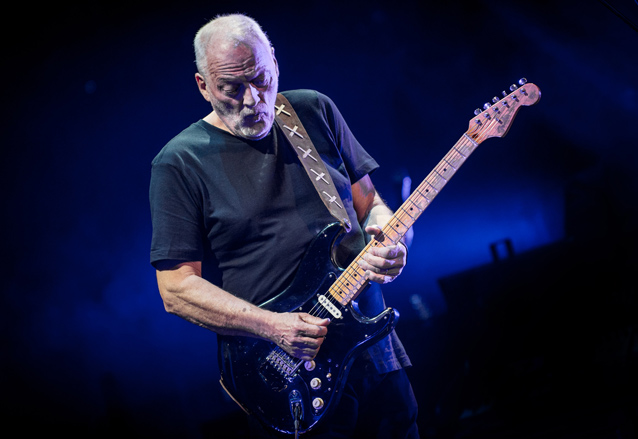The 10 most important electric guitars: from their 1930s invention to '80s hot-rod era
10 major milestones in the electric guitar's journey from novelty to high-performance rock machine

In their recent book, Play It Loud: An Epic History of the Style, Sound & Revolution of the Electric Guitar, renowned guitar journalists Brad Tolinski and Alan di Perna trace the eight-decade evolution of the world's most influential musical instrument.
Here, they spotlight 10 major milestones in the electric guitar's journey from 1930s novelty to high-performance rock machine.
1. Rickenbacker (Ro-Pat-In) Electro A-25 “Frying Pan” (1932)
For many, 1932 marks the year the electric guitar was invented. The frying pan is the first-fully functioning solid-body electric guitar to be manufactured and sold – it was developed by Ro-Pat-In, now known as Rickenbacker.
While primarily designed for Hawaiian-style steel playing-horizontally on the lap, it also could be adapted for playing vertically against the torso. The instrument earned its bizarre nickname because its circular body and long neck made it resemble a frying pan.
2. Gibson ES-150 (1936)
The first commercially successful electric guitar, the ES-150 achieved unprecedented notoriety due in large part to its endorsement by prominent guitar players of the day, such as Eddie Durham, Floyd Smith and Charlie Christian. As for its rather unexciting name, the “ES” stood for Electric Spanish, while the “150” reflected an instrument/amplifier bundle priced at around $150.
3. Fender Telecaster (1951)
The first commercially successful solid-body electric guitar. It's simple yet effective design and bright “single-coil” sound revolutionized electric guitar manufacturing and popular music. The ultimate workingman's instrument, the Telecaster remains in production year after year after year...
4. Gibson Les Paul (1952)
Designed by Ted McCarty with guitarist Les Paul as a consultant, this instrument was the first solid-body electric guitar sold by the Gibson Guitar Corporation. Initially something of a commercial failure, the Les Paul was discontinued in 1961. The iconic instrument, however, was saved from the dustbin of history when American bluesman Mike Bloomfield and British rockers like Keith Richards, Eric Clapton, Peter Green and Jimmy Page started playing them in the late Sixties, forcing Gibson to revive the model.
Get The Pick Newsletter
All the latest guitar news, interviews, lessons, reviews, deals and more, direct to your inbox!
5. Gretsch 6128 Duo Jet (1953)
When Fender and Gibson started selling solid-body guitars by the truckload, the Gretsch Company quickly hopped on the bandwagon with the Duo Jet, arguably the first true rock and roll axe. The original was issued only in juvenile-delinquent black, but starting in 1954 the company upped the flash quotient and started making them in sparkled silver finish and other custom colors. The sparkle material came from Gretsch's drum manufacturing operation.
6. Fender Stratocaster (1954)
After the success of the Telecaster, Leo Fender quickly introduced this iconic successor. The first guitar to feature three pickups and a spring-tension tremolo system, the Strat was also sleeker and sexier than the unpretentious, slab-like Telecaster. Featuring a contoured body shape, a double cutaway that allowed easier access to the higher frets and an array of custom colors, it became an instant favorite of early rockers like Buddy Holly and Ritchie Valens, and later guitar heroes like Jimi Hendrix and David Gilmour.
7. Rickenbacker 360/12 (1964)
Popularized by Beatle George Harrison, who used it in the 1964 film A Hard Day's Night and on iconic Beatles tracks such as “You Can't Do That,” “I Should Have Known Better,” “I Call Your Name,” “Ticket to Ride” and “If I Needed Someone,” the 12-string electric was an integral part of the band's sound in the Sixties. In addition to its distinctly effervescent jingle-jangle sound, the instrument appealed to Harrison for other practical reasons. “It's the only 12 string you can tune when you're drunk,” Harrison once quipped.
8. Van Halen Frankenstein (1975)
When the quality of Fender and Gibson guitars hit the skids in the early Seventies due to corporate cost-cutting measures, an unsatisfied young Edward Van Halen took matters into his own hands and built his own instrument.
Using replacements parts and pieces of old Fender and Gibson instruments that he liked, Van Halen built a custom hot rod, inspiring thousands of young guitarists like Steve Vai and Randy Rhoads (not to mention) guitar makers to follow suit.
9. Paul Reed Smith Custom (1985)
In the mid-Seventies, Paul Reed Smith was another young man who was dissatisfied with the decline of American-made guitars. Obsessed with building a better mousetrap, he starting making quality instruments from scratch and selling them to superstars like Peter Frampton, Ted Nugent and Carlos Santana.
Smith launched his own company in the mid-Eighties and became a beacon for integrity and commitment to excellence, forcing his competitors to improve, which in the end, benefitted all guitarists.
10. Ibanez JEM (1987)
When the JEM was introduced, it was a veritable jack-in-the-box of wild ideas and innovation. Conceived by Steve Vai and built by the Japanese-owned Ibanez, it was designed to be the ultimate shredder machine.
Sporting a deeper neck cutaway, a unique humbucker-single coil-humbucker combination, 24 frets, an impossibly thin neck, “yank-proof” jack, the first floating bridge and goofy monkey grip, it stands as one of the most interesting and commercially successful instruments in electric guitar history.
Play It Loud: An Epic History of the Style, Sound & Revolution of the Electric Guitar by Brad Tolinski and Alan di Perna is available now.
A long time ago in a galaxy far, far away Brad was the editor of Guitar World from 1990 to 2015. Since his departure he has authored Eruption: Conversations with Eddie Van Halen, Light & Shade: Conversations with Jimmy Page and Play it Loud: An Epic History of the Style, Sound & Revolution of the Electric Guitar, which was the inspiration for the Play It Loud exhibition at the Metropolitan Museum of Art in New York City in 2019.
“It holds its own purely as a playable guitar. It’s really cool for the traveling musician – you can bring it on a flight and it fits beneath the seat”: Why Steve Stevens put his name to a foldable guitar
“Finely tuned instruments with effortless playability and one of the best vibratos there is”: PRS Standard 24 Satin and S2 Standard 24 Satin review


















